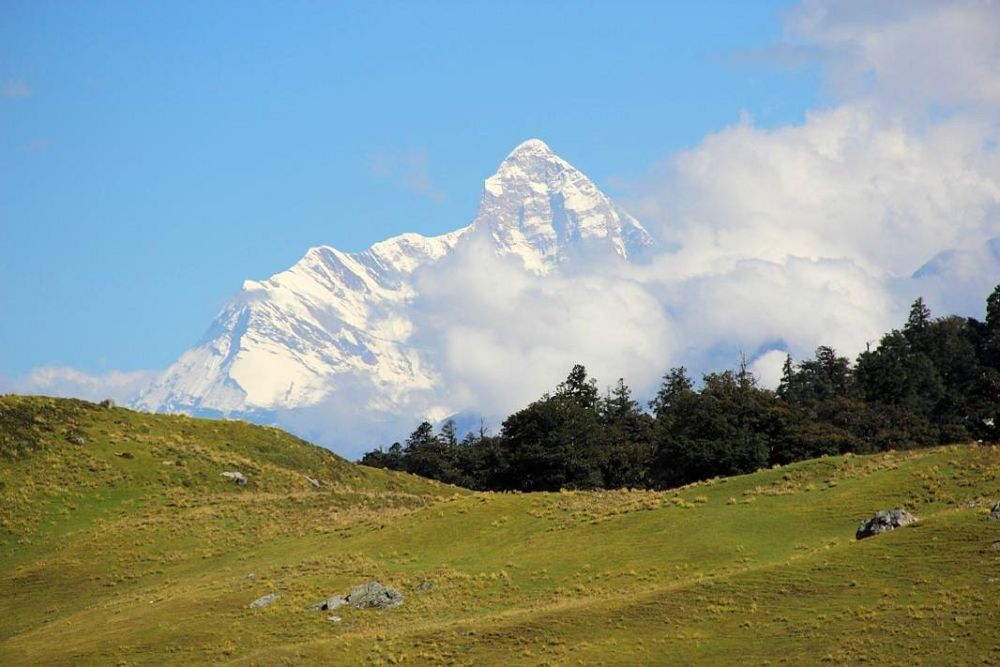

Nanda Devi National Park, a part of the Nanda Devi and Valley of Flowers National Parks UNESCO World Heritage Site, is an eminent refuge for high-altitude flora and fauna. The region was declared a national park in 1982, but it has a long history that intertwines with the spiritual and cultural traditions of the area. Sacred to the local population, Nanda Devi itself is considered the abode of the Goddess Nanda.
Historically the park was virtually inaccessible, which helped preserve its pristine condition. Early exploratory expeditions in the late 19th and early 20th centuries, such as by W.W. Graham in 1883 and the successful ascent to Nanda Devi East by Eric Shipton and Bill Tilman in 1934, established Nanda Devi as a mountaineering destination. However, concerns over ecological damage led to a complete ban on tourism and mountaineering in the park in 1983. This ban remained until recently when limited, regulated trekking was reintroduced to encourage responsible eco-tourism.
The park, which contains the Nanda Devi Sanctuary, has been a pioneer in ecological conservation in the Indian Himalayas. Due to its remote location and the government's preservation efforts, it's one of the most pristine wilderness areas in the Himalayas. It's a biodiversity hotspot, hosting several endangered and endemic species like the Snow Leopard and Himalayan musk deer.
Auli, located close to the Nanda Devi National Park, is famed for its ski resorts and stunning natural beauty. It became a hotspot for skiing enthusiasts in the 1980s. Once a training ground for the Indian Paramilitary Forces, it slowly opened up to civilian adventurers and has since become one of India's top destinations for skiing and winter sports.
Besides skiing, Auli offers opportunities for numerous other adventure sports such as snowboarding and trekking. The lush meadows and forests around Auli are popular trails for trekkers, leading to stunning panoramic views of the Himalayas. The artificial lake in Auli, one of the world’s highest man-made lakes, serves a dual purpose of providing a stable snow surface for skiing and adding to the scenic beauty of the area.
Eco-friendly travel is the latest trend influencing tourism in the Nanda Devi National Park and Auli region. There is an increasing emphasis on sustainable practices that minimize the impact on the environment. Tourists are increasingly looking for experiences that are not only recreational but also enlightening in terms of local culture and nature conservation. Homestays and community tours are becoming more popular, providing visitors with an authentic and immersive experience while benefiting local communities.
Adventure tourism continues to grow, with visitors seeking personalized experiences like guided treks, bird-watching tours, and even high-altitude camps. The drive for health and wellness has also led to the rise of yoga and meditation retreats against the backdrop of the Himalayan mountains.
Today, Nanda Devi National Park and Auli are managed with care to balance tourism and environmental sustainability. Visitors are encouraged to follow leave-no-trace principles and respect local customs and wildlife. With an increasing number of tourists looking for eco-friendly and rural experiences, Nanda Devi National Park and Auli are setting a benchmark for responsible and sustainable tourism.
Note: Visitors to the region are advised to check current regulations and guidelines before planning their trip, as policies regarding tourism and conservation in this ecologically sensitive area can change.